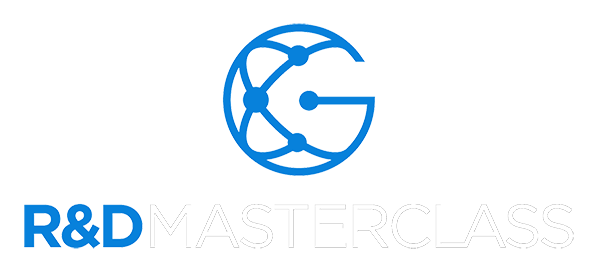Whether you’re filling a gap in the market or seeking to better understand new methods of efficiency for production in your own business, every industry can benefit from research and development (R&D).
We know R&D can be a difficult process at times, but it can be beneficial for a range of different purposes. That’s why we’re passionate about educating businesses and their teams on the steps to effective R&D.
In 2019, global businesses spent a combined $2.3 trillion on R&D, with the high-tech, media and telecom sectors responsible for the largest expenditure of $182 billion. This was closely followed by pharma and medical products at $178 billion, and industrials at $156 billion.
That’s according to McKinsey & Company, who also identified the four main obstacles that companies face in R&D. They were Accelerating Innovation Cycles; R&D lacking a connection to customers; few accountability metrics; and a decreased risk tolerance negating bold, innovative projects.
Companies from all industries may need to undertake R&D at some point, as they strive to stay relevant among the competition. So, it’s important to know how to navigate these obstacles with an effective R&D process.
Different companies will have different R&D objectives depending on their size and budget. Larger companies will have the available capital to invest in lengthy product development, while smaller ones may only afford to undertake minor R&D projects.
In any case, R&D is a vital part of any business’ growth – especially if claiming government incentives to support your project expenditure, – so it’s important to get it right.
If this blog doesn’t answer your questions, make sure to contact us at R&D Masterclass to learn more about effective R&D and how to claim the associated costs.
1. Setting A Goal
Before you set out on your R&D journey, it’s important to know what you’re aiming to achieve and the problem you’re trying to fix for your business.
This could be identifying a gap in the market or an issue with your current offering. Alternatively, it could be as simple as understanding what your customers are looking for in the future.
You should also set goals for how this R&D process will boost your business, such as financial gains, appealing to a wider audience, or in some cases, to claim these business activities on your tax return.
2. Initial Research
The next step to successful R&D is reading widely across the industry to understand what’s already been done and what you can take as inspiration for your project. It will also help you to identify and define the technical risks associated with your project. It is advised at this stage to fill in a Technical Investigation Template.
From here, you are likely to begin incurring fees that can be claimed on tax, so it’s important to keep your records in order.
“To meet your record-keeping requirements and avoid common errors, ensure you understand what records are needed for your business and make accurate and complete record-keeping practices a part of your daily business activities,” according to the Australian Taxation Office.
In your research, you may pay for access to literature or reports from other research institutes or pay a visit to indirect industry competitors to learn about their offerings. Different jurisdictions may allow these costs to be claimed, so get in contact with us to understand what’s available to you.
3. Documenting Your Hypotheses
Before you go any further, any good research should begin with a hypothesis. Once the research is complete, you can then return to this and understand what you’ve learned throughout the process.
You should also outline the key questions you would like to answer and the key objectives you would like to accomplish. This will give you an indication of whether the project was a success or failure – based on whether you have proved or disproved your hypothesis – and whether the associated costs were worth spending to enable a commercial outcome.
4. Designing The Study
There are plenty of ways to conduct industry research. This will vary depending on your budget, company size, and purpose.
A cheaper study design could strictly be an observational study where historical reports are searched for in buying patterns. Alternatively, a more expensive method would be to survey a target audience, conducting workshops and think tanks before experimenting with various new product designs.
Another important consideration is the study sample. This includes factors such as the breadth of your reading material or the diversity of the population being surveyed. For instance, conducting a global survey would inevitably increase costs due to the need for tailoring questions to accommodate various languages and cultural contexts. Similarly, expanding your reading scope would incur higher expenses as it involves accessing a wider range of resources.
Different jurisdictions allow for various R&D project elements that can be claimed. Market research, in some countries, is permissible to be claimed under the relevant local tax or government incentives, yet is specifically excluded in others, so when designing your study, it is worth considering if any exemptions to your activity apply.
Studies are typically conducted to lay the groundwork for the next phase of your research and development, where the focus shifts to experimentation.
5. Analysing The Data
How you collate and analyse your research data will depend on the kind of research you undertake. A survey will involve the collation of both qualitative and quantitative data which can be assessed to find patterns and customer personas for you to satisfy in the product development stage.
If your research primarily involves extensive reading and consulting with industry professionals, it will likely yield qualitative themes and patterns that can be analysed and applied to inform your development process.
6. The Research Report and Proposal
Once you have understood your findings, you should be able to identify what needs to be developed to achieve your R&D goals.
Whether it’s a new product, a new manufacturing methodology, or a completely new innovation, you’ll need to write up a research report to present to investors or executives who can approve the experimentation and development stage.
A research report will clearly outline your hypothesis, findings, a development proposal and your reasons for development. If all goes well, your development will be approved, and the next stage of an exciting journey can begin for your business.
7. Conduct the Experiments using a Scientific Method
You should undertake experimentation using a systematic method and progression of work, regularly review and report on your findings and iterate the design. This is the standard process for undertaking true R&D activities.
Claiming R&D On Tax
The final step in any R&D journey should involve maximising eligible tax claims or taking advantage of government incentives. However, navigating the complexities of these processes can be challenging, and valuable opportunities may be overlooked during the tax return process without a thorough understanding of the applicable criteria and requirements.
At R&D Masterclass, we’re working with companies across industries to undertake effective R&D projects and get the most out of them when it comes to tax time.
For more information, sign up to our course and enhance your education on all things R&D.






